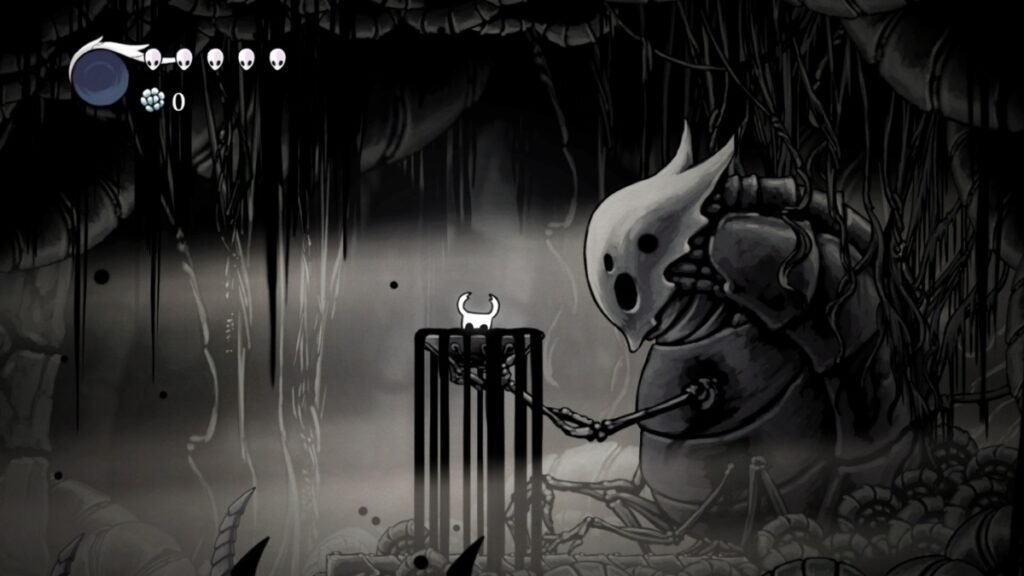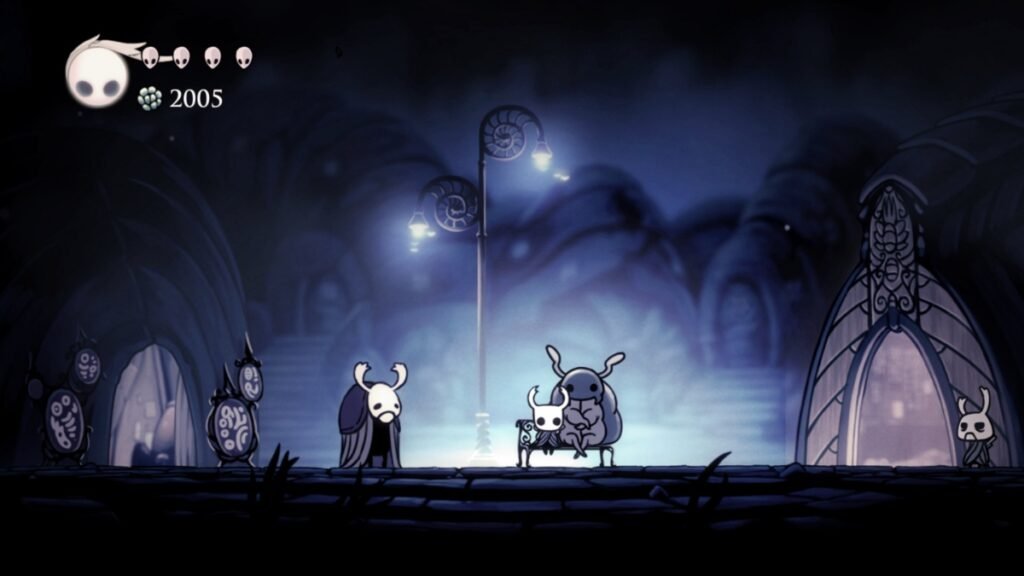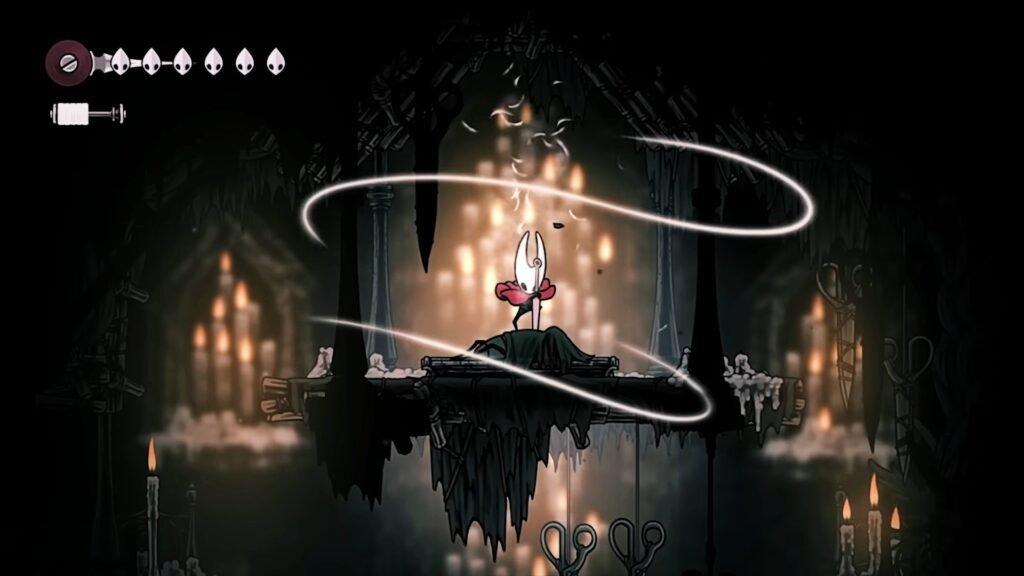Hollow Knight Silksong is the second game in the Hollow Knight series. While it may be popular, a lot of people are asking if you really need to play Hollow Knight first.
Kickstarter owners who wanted to play early likely already have the game, but anyone who hasn’t played it likely wonders what they missed. Silksong is a continuation of the Hollow Knight series, and games are meant to be played in order. However, there is an interesting exception when it comes to Silksong.
What Important Details Did I Miss in the Original Hollow Knight?

The world of Hollow Knight is incredibly deep, with so many critical details woven into its environmental storytelling, item descriptions, and even the music. It’s an experience that really rewards players who take their time and pay attention to everything. If you haven’t played the original, you’re missing out on the whole tragic history of Hallownest, the once-great kingdom where the first game is set.
This ruined kingdom is key to understanding the big threats and motivations of a lot of the characters. The main story revolves around something called the “Infection,” a mysterious plague that drove the kingdom to madness, and the sacrifices that were made to try and stop it. The lore around figures like the Pale King, the White Lady, and the different groups like the Moth Tribe and the Five Great Knights paints a picture of a complex society with its own triumphs, ambitions, and ultimately, its devastating fall.
You’d also be missing the whole backstory of Hornet, who is the star of Silksong. In the first game, she’s not just a side character. She’s a crucial figure with a mysterious past and a vital role in the fight against the Infection. Her interactions with the main character, the Knight, and her combat skills all hint at a destiny far bigger than you might think at first. The true nature of the Hollow Knight itself and the heartbreaking sacrifices involved in its creation are at the very emotional core of the game.
Without all of this context, Hornet’s journey in Pharloom, the new kingdom in Silksong, might not have the same depth. You’d miss out on understanding her motivations, her cautious nature, and her connection to the fate of these worlds. The subtle hints that establish her as a formidable and morally complex character, driven by duty and a hidden sadness, would be completely absent.
The environmental storytelling in the first game often reflects the tragic beauty of Hallownest, with every crumbling statue and desolate landscape contributing to the feeling of a grand history that has been lost. These details aren’t just told to you; you have to find them and put the pieces together yourself. A complete appreciation for Hornet’s character and the world she lives in for Silksong is a hundred times better if you have that rich tapestry of lore from the original Hollow Knight.
What Do I Need to Know Before Playing Silksong?

Silksong is a direct sequel and stars Hornet, who was a super important side character in the original game. By playing Hollow Knight, you get a ton of context about her background, her motivations, and her place in the larger story. You’ll see her first appearances and really get a feel for her journey from a supporting character to the main star of Silksong. This will undoubtedly make you feel more connected to her and her new adventure.
Beyond the character stuff, playing Hollow Knight is a great way to dive into the rich and complex lore of Hallownest, the kingdom from the first game. While Silksong takes place in a brand new kingdom called Pharloom, far away from Hallownest, it’s a safe bet that the storytelling style will be the same. Hollow Knight tells its story in subtle ways, through item descriptions, environmental details, and even musical cues, so playing it first will train your senses to pick up on those little hints in Silksong.
How Did Hollow Knight End?

The story of Hollow Knight doesn’t end with one single, clear-cut conclusion. Instead, it offers you a bunch of different outcomes, and they all depend on the choices you make during your journey. Each ending reflects different ideas about sacrifice, duty, and what the Infection is all about. The whole narrative revolves around this mysterious, orange-glowing plague that’s driving everyone in the kingdom of Hallownest mad.
Your character, the silent Knight, is a “vessel, “a being made of void and a shell, created specifically to contain this nasty force. The ultimate fate of Hallownest and the Knight all depends on whether you can successfully contain the Infection or if you can take out its source for good.
In what’s often called the “good” or “true” ending, you confront the source of the Infection: the Radiance, an ancient moth god whose forgotten presence is what’s fueling the plague. To get to this final fight, you have to collect all the pieces of the Void Heart, which lets you unite the void within you and take on the Radiance directly in its dream realm.
This path usually involves first defeating the Hollow Knight, another vessel who tried to contain the Infection but failed, becoming a corrupted conduit for the Radiance’s power. By defeating both the Hollow Knight and the Radiance, the Knight, now fully powered by the void, unleashes its true strength, consuming the Radiance and completely wiping out the Infection from Hallownest. This powerful act, though, comes with a cost. The Knight often sacrifices itself in the process, becoming a new, all-encompassing vessel of void or just disappearing into the emptiness it now controls.
The kingdom is saved, but the hero is gone, leaving a world finally freed from its curse. On the other hand, another big ending has the Knight simply taking the place of the corrupted Hollow Knight and containing the Infection within itself without ever directly confronting the Radiance. This happens if you defeat the Hollow Knight without having fully assembled the Void Heart.
In this scenario, the Knight fulfills its purpose as a vessel and takes on the burden of containment. The Infection is held in check, but not destroyed, which suggests a cycle of struggle for the kingdom. The Infection could always resurface if this new vessel ever weakens. This ending highlights the grim reality of an endless duty and the possibility of history repeating itself, painting a much more somber picture of what’s to come for Hallownest.
There are even more variations beyond these main paths, like the “Dream No More” ending, which goes even deeper into the defeat of the Radiance and what Hornet, the mysterious protector of Hallownest, does in the aftermath. Each conclusion gives you a different perspective on sacrifice, legacy, and the never-ending fight against darkness.
It leaves you thinking about the real meaning of victory and the cost of salvation in the beautiful but desolate world of Hallownest. The final moments of the story are never completely clear, which really fits the game’s overall narrative of discovery and interpretation. Hollow Knight Silksong will likely also have an impactful ending.
Do I Have to Play Hollow Knight Before Silksong to Understand It?

The short answer is no, you don’t need to play Hollow Knight before Silksong. You can jump right into Silksong without feeling lost. The game is designed to be super welcoming to new players, and there’s a good reason for that. The game takes place in a brand new kingdom called Pharloom, which is completely separate from Hallownest, the setting of the first game.
The lore and histories of these two kingdoms seem to be mostly separate, so you won’t need to know all the intricate details of Hallownest’s past. The main character is also new this time around. You’ll be playing as Hornet, who was a big character in the first game but is now on her own journey. While Hollow Knight veterans will already know her, her story in Silksong isn’t constantly referencing her past adventures with the Knight.
The story isn’t going to punish you for not having played the first game. Both games rely heavily on environmental storytelling, item descriptions, and even music to tell their stories, which makes the narrative a journey of discovery rather than a bunch of dialogue.
This subtle approach means that even people who have played Hollow Knight might not catch every single detail, and it gives new players the chance to dive into Silksong’s lore with a fresh perspective. That said, while you don’t have to play Hollow Knight first, doing so definitely has its advantages.
Playing the first game gives you a lot of context for Hornet’s character, her motivations, and her role in the world. Knowing her background from the original can make her new journey in Silksong feel so much richer. Plus, playing Hollow Knight first will get you used to the unique Metroidvania gameplay, challenging combat, and platforming that the series is known for. This foundational experience can make the learning curve in Hollow Knight Silksong much smoother, even with the new tutorials.





